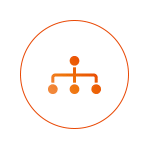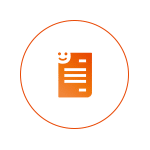
AGILE HR technology solution
Crosstalent HRMS Solution
Manage your HR processes in a modular way and connected to all of your other business applications.
People management
People management is at the heart of every HR management system. The employee’s profile consolidates key data and information from different sources, particularly the payroll.
Jobs & organization
This module manages the link between employees, job descriptions and jobs in an organization with reporting lines.
Recruitment
Onboarding
Skills
Skills management includes both a regulatory aspect (classification, professional category etc. and a strategic aspect (anticipation of future requirements, etc.).
Performance management
For most companies, performance appraisal and target-based management require an annual individual interview process. In many cases, this is not done electronically and is not collaborative or application-based.
Talent management
The HR department needs easily modifiable dashboards so that it can comply with the priorities of the policy implemented. HR teams have to be able to access these indicators from anywhere using any medium.
Learning & development
Training presents a two-fold challenge to the HR department: strategic in terms of developing competencies and employability, and financial in terms of the percentage of the wage bill invested Crosstalent addresses every aspect of the training process.
Job mobility
Job mobility in the company also presents two challenges: optimising the wage bill by improved allocation of resources and retaining talent by offering more career development opportunities.
Compensation & benefits
Increases in salary are determined by management and an annual interview which helps shape the human resources policy. This normally involves three people: the employee, his her manager and the relevant HR manager. Close cooperation between these three is essential.
Time & attendance
In too many cases, companies fail to optimise the systems used to process recorded working time and expenses. These applications are based on two principles: firstly, no paper and fully automatic and secondly, the ergonomics of a mobile and collaborative interface.













